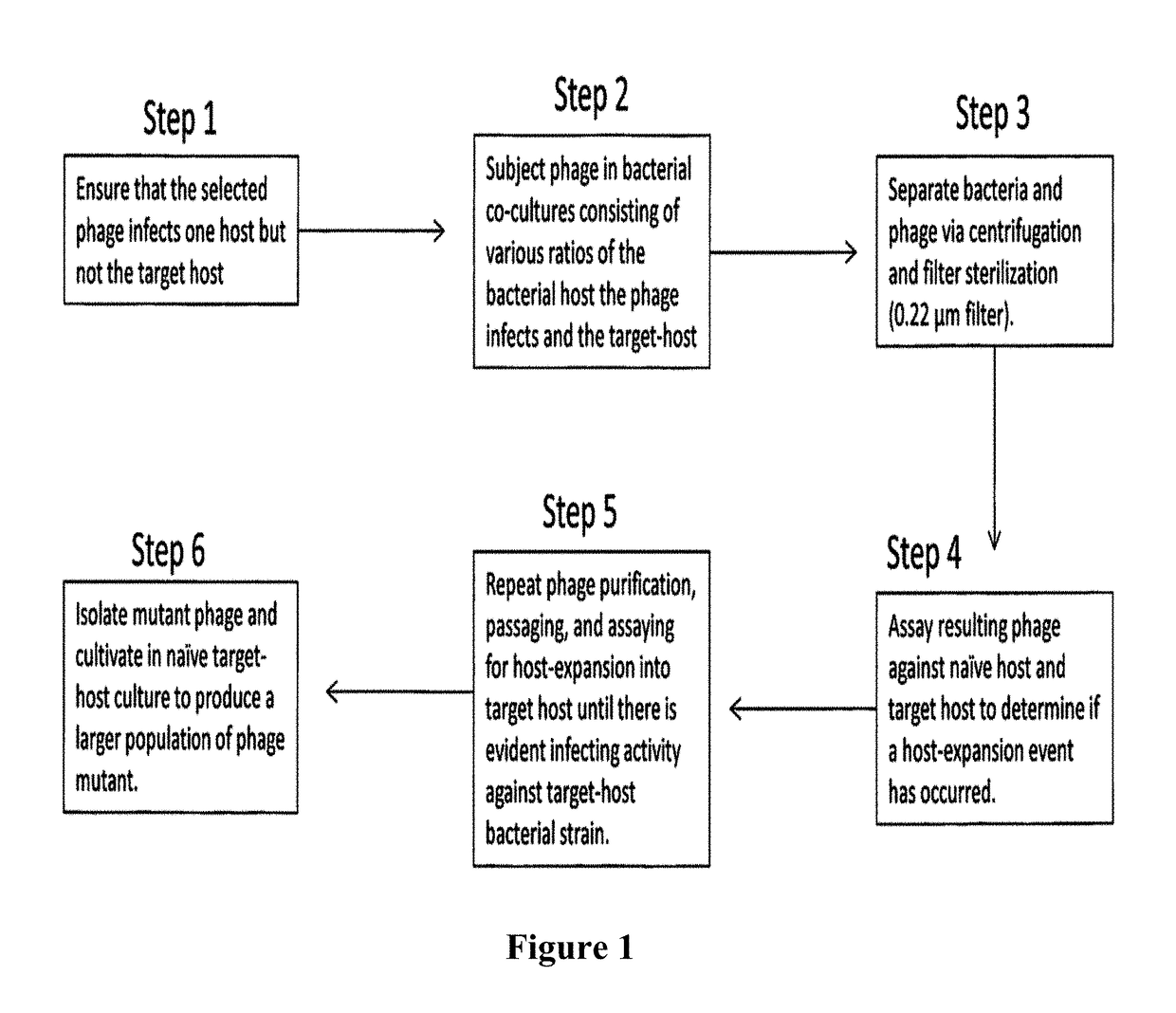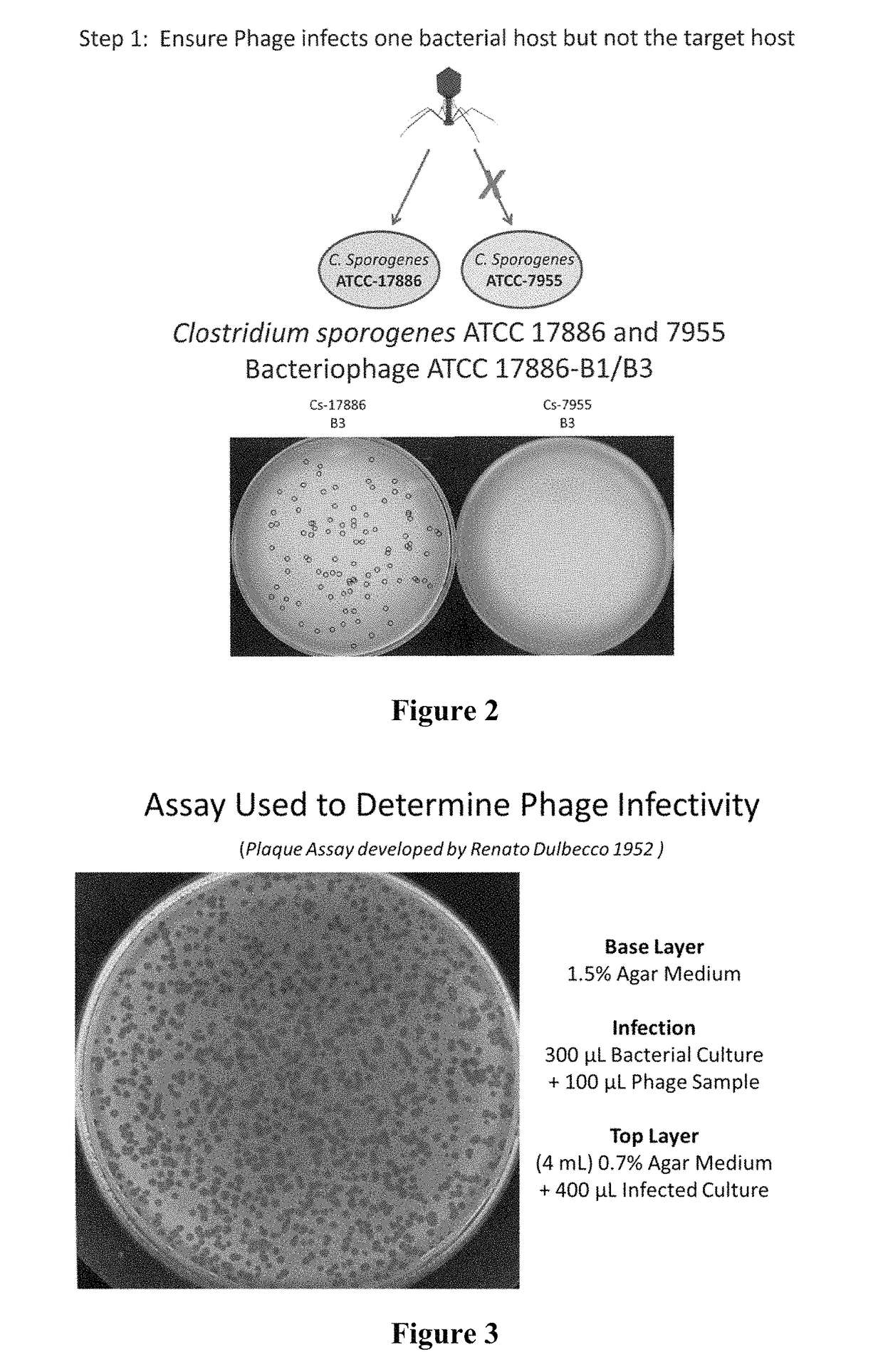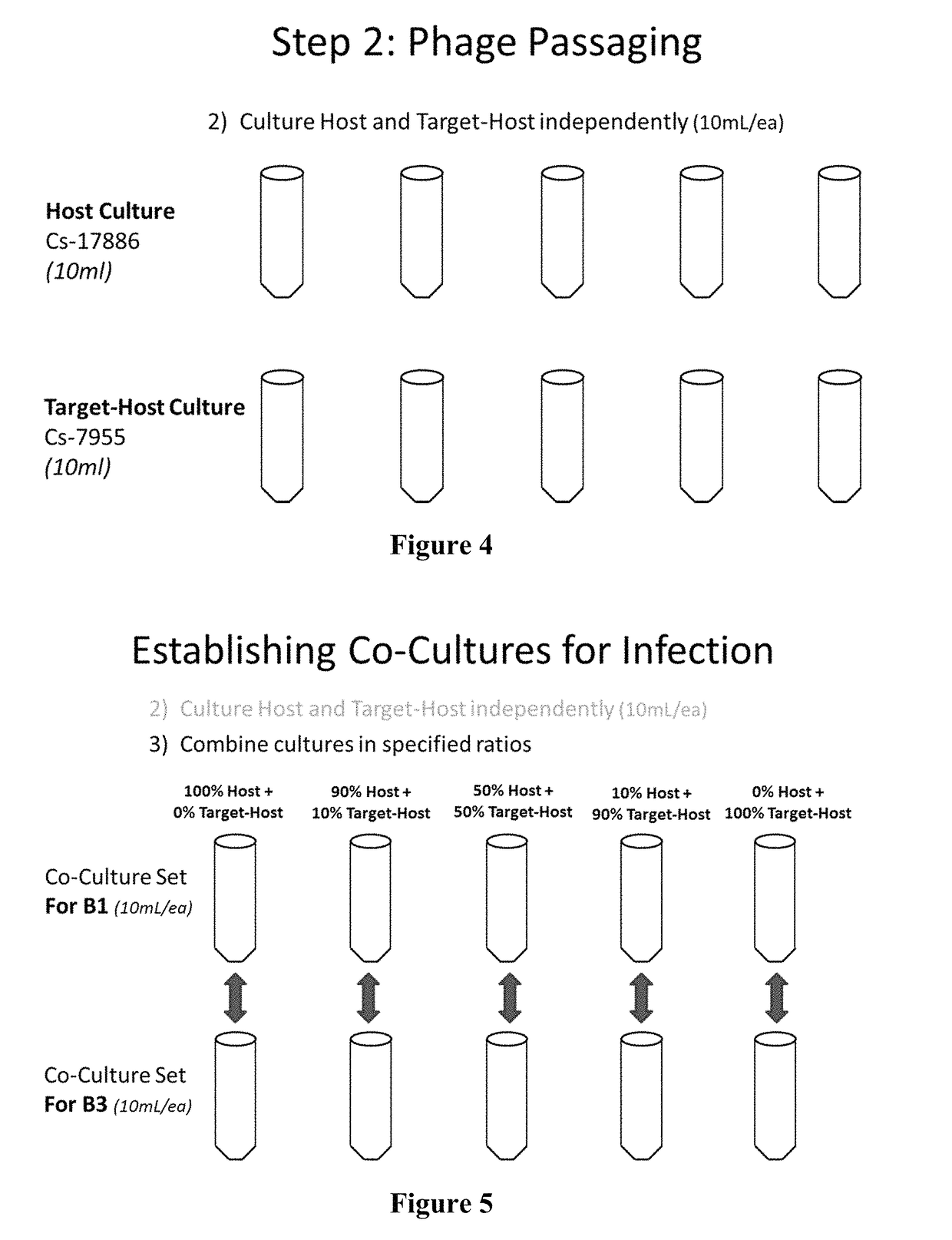Methods of expanding bacteriophage host-range and bacteriophage produced by the methods
- Summary
- Abstract
- Description
- Claims
- Application Information
AI Technical Summary
Benefits of technology
Problems solved by technology
Method used
Image
Examples
example
[0085]By passaging phages in co-cultures of their natural host with increasing ratios of a target-host, the host range of two phages specific to Clostridium sporogenes were expanded. This adaptation was performed in both the presence and absence of a mutagen. Of twenty-eight total mutants, six were sufficiently stable to persist in target-host culture alone. Of these six, four were chosen for further analysis of their infective activity in their natural and target-hosts. Most phage populations that resulted from each passage of each co-culture infection lost infective activity against their initial host and also failed to show infecting activity in the target-host. On the other hand, there were several phage populations that demonstrated a gain of activity against one or both hosts. In some cases the gained infectivity exceeded the infective activity that was measured for the starting host at the beginning of the project. Though mutations causing host-expansion events in phages seem...
PUM
 Login to View More
Login to View More Abstract
Description
Claims
Application Information
 Login to View More
Login to View More - R&D Engineer
- R&D Manager
- IP Professional
- Industry Leading Data Capabilities
- Powerful AI technology
- Patent DNA Extraction
Browse by: Latest US Patents, China's latest patents, Technical Efficacy Thesaurus, Application Domain, Technology Topic, Popular Technical Reports.
© 2024 PatSnap. All rights reserved.Legal|Privacy policy|Modern Slavery Act Transparency Statement|Sitemap|About US| Contact US: help@patsnap.com










